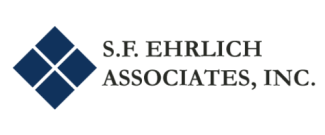
Stan's World - Aging is not for the faint of heart
When seniors make the decision to move into a senior community, they do so with the hope and expectation that they have made the right choice. Select the wrong community, and the golden years may feel somewhat less than golden.
Over the past year or so, John and I have spoken with a few clients who are considering a move to senior housing for themselves or a family member. Based on my personal experience dealing with my own family members, along with lessons passed on to us by clients who have gone through this journey, I am now in a position to share some of what we’ve learned.
Let’s start with terminology, as there is often confusion about what to call senior housing. The most all-encompassing type of senior housing is a continuing care retirement community (or CCRC). A CCRC is a community that offers a continuum of care, ranging from independent living to assisted living, including memory and nursing care. A true benefit of a CCRC community is that virtually all the care an individual may require while aging takes place on one campus, allowing residents to transition from one level of care to the next with minimal upheaval.
Most residents in a continuing care community live in independent living, where they live self-sufficiently in their own apartments. But independent living in a CCRC should not be confused with communities that only offer independent living, with no continuum of care. Residents of communities that only offer independent living would have to move off-site if they required assisted living or other advanced care services.
Some communities are specifically focused on providing only assisted living services, and those communities are also likely to offer memory and nursing care. For seniors who are mostly self-sufficient and can live independently, an assisted living community may not be the most suitable housing option.
Costs are a very significant issue when deciding whether to move into a continuing care community and which community to select. For a CCRC, there is likely a large, up-front payment, also known as an entrance fee, followed by monthly payments to cover ongoing costs. In return, residents receive a lot.
As an example, I’ll use Cedar Crest Village (Pompton Plains, NJ), a CCRC where my mother lived for 10 years. (This is not an endorsement of Erickson Communities, which owns Cedar Crest. I’m just using Cedar Crest because I know it relatively well.)
Entrance fees at Cedar Crest vary based on the size of the apartment selected. For a two-bedroom, one-and-a-half-bath apartment, the entrance fee ranges from $340,000 - $527,000. The size of apartments varies. If a resident were to leave (or die), the resident (or his/her heirs) would receive 90% of the entrance fee. (Residents can’t buy and sell housing units on their own. Sales are handled through the CCRC.)
In addition, the monthly cost for the first person living in the above unit is $3,890 to $4,137, with the second resident paying an additional $1,432/month. These costs include a monthly meal plan at all restaurants, utilities and maintenance, heating and cooling, social programming, 24-hour security, use of the swimming pool and gym, property taxes, access to the medical center, and other related expenses.
With more than 2,000 residents, there is so much programming at Cedar Crest that they broadcast the schedule on their own TV channel, thus reaffirming one of the arguments I often make to clients who are considering a move to a CCRC: move in when you’re healthy enough to enjoy and take advantage of all the community has to offer.
Before moving into a CCRC, or any senior housing community, it’s essential to determine if the CCRC is financially stable. Are their audited financial reports available for you, or your representative, to review? Does state law cover what would happen to you (and your entrance fee) if the CCRC were to go bankrupt? Who are the true owners of the CCRC, and what do their financials look like?
Another critical question to ask if you visit a CCRC: what happens if a resident runs out of money? At Cedar Crest, when a resident outlives his/her finances, the monthly payment will then be deducted from the entrance fee, meaning the resident (or his/her heirs) will receive that much less when the unit is vacated. Should a resident deplete their personal assets and spend down their entrance fee, Cedar Crest would use Medicaid and any other resident monthly cash flow (i.e., Social Security, pension) to keep the resident on-site.
Cedar Crest does not move people out of the community when they can no longer pay, and that’s a really big deal. In contrast, my wife’s mother lived in a nursing home that didn’t accept Medicaid. If she had exhausted her resources, the nursing home would have moved her to a facility that accepted Medicaid.
You may wonder how an individual or couple with a few million dollars can outlive their assets while living in a CCRC or any other senior housing. Unfortunately, that math is easy to follow.
If someone can no longer live independently and requires additional care, moving into assisted living is an option to care at home. Monthly costs for an apartment in an assisted living community can easily range from $10,000 - $12,000. If that person requires a personal home care aide in addition to the aides provided by the assisted living community, the cost ranges from $25-$35/hour. Using $30/hour as an example, a personal home-care aide working 8 hours/day would cost 8 hours/day x 7 days/week x 52 weeks/year x $30/hour = $87,360/year. If we further assume the monthly cost in an assisted living community is an additional $11,000/month, that’s an additional $132,000/year. Adding $132,000 + $87,360 = $219,360/year. Unfortunately, math class isn’t over.
If you’re a couple with one partner who is healthy while the other partner requires assistance, you must add housing and other living costs for the healthy partner to the cost of care for the partner who requires assistance. If you add those two expenses, the total becomes staggering. And that’s just for one year!
There are a few planning techniques that seniors may consider to protect their assets. If we haven’t already done so, we’re happy to discuss them with you or refer you to an attorney who specializes in elder care planning.
As the actress Mae West may (or may not) have said: “Aging is not for the faint of heart.”
S.F. Ehrlich Associates, Inc. (“SFE”) is a registered investment advisory firm in New Jersey that offers investment advisory, financial planning, and consulting services to its clients, who generally include individuals, high net worth individuals, and their affiliated trusts and estates. Additional disclosures, including a description of our services, fees, and other helpful information, can be found in our Form ADV Part 2, which is available upon request or on the SEC's website at www.adviserinfo.sec.gov/firm/summary/121356.
If you are an existing client of SFE, it is your responsibility to immediately notify us if there is a change in your financial situation or investment objectives for the purpose of reviewing, evaluating or revising any of our previous recommendations and/or services.
This newsletter is for informational purposes only and is not intended to be and does not constitute specific financial, investment, tax, or legal advice. It does not consider the particular financial circumstances of any specific investor and should not be construed as a solicitation or offer to buy or sell any investment or related financial products. We urge you to consult with a qualified advisor before making financial, investment, tax, or legal decisions.
Information contained herein has been obtained from sources believed to be reliable. While we have no reason to doubt its accuracy, we make no representations or guarantees as to its accuracy. The opinions and analyses expressed herein constitute judgments as of the date of this newsletter and are subject to change at any time without notice. Any decisions you make based upon any information contained in this newsletter or otherwise are your sole responsibility.
No graph, chart, formula, or other device can, in and of itself, be used to determine which securities to buy or sell, or when to buy or sell such securities, or can assist persons in making those decisions.
Any securities mentioned in this newsletter are for illustrative purposes only and should not be construed as investment advice or a recommendation to buy or sell. There is no guarantee that a particular client's account will hold any or all of the securities mentioned in this newsletter. Additionally, from time to time, SFE’s officers, directors, employees, agents, affiliates, or client accounts may hold positions or other interests in the securities mentioned in this newsletter.
Any historical index performance provided herein is for illustrative purposes and includes the reinvestment of dividends and income, but does not reflect advisory fees, brokerage commissions, and other expenses associated with managing an actual client account. An index is an unmanaged group of stocks considered to be representative of different segments of the stock market in general. Index performance does not represent actual account performance. One cannot invest directly in an index. A description of each index mentioned in this newsletter is available upon request.
Any hypothetical performance shown or discussed herein is for illustrative purposes only. Hypothetical performance results have inherent limitations, including: they are generally prepared with the benefit of hindsight; do not involve financial risk or reflect actual trading; and do not reflect the economic and market factors, such as concentration, lack of liquidity or market disruptions, trading costs, and other conditions, that might have impacted our decision-making when managing actual client accounts. Since trades have not actually been executed, hypothetical performance results may have under- or overcompensated for the impact, if any, of certain market factors.
It should not be assumed that future performance of any specific investment, investment strategy, or index (including any discussed in this presentation) will be successful or profitable or protect against loss.
Any forward-looking statements or projections herein are based on assumptions. By their nature, forward-looking statements involve a number of risks, uncertainties, and assumptions that could cause actual results or events to differ materially from those expressed or implied by the forward-looking statements. You should not place undue reliance on forward-looking statements, which reflect our judgment only as of the date this newsletter was published.

